Carles Sierra
Can Poverty Be Reduced by Acting on Discrimination? An Agent-based Model for Policy Making
Mar 03, 2024Abstract:In the last decades, there has been a deceleration in the rates of poverty reduction, suggesting that traditional redistributive approaches to poverty mitigation could be losing effectiveness, and alternative insights to advance the number one UN Sustainable Development Goal are required. The criminalization of poor people has been denounced by several NGOs, and an increasing number of voices suggest that discrimination against the poor (a phenomenon known as \emph{aporophobia}) could be an impediment to mitigating poverty. In this paper, we present the novel Aporophobia Agent-Based Model (AABM) to provide evidence of the correlation between aporophobia and poverty computationally. We present our use case built with real-world demographic data and poverty-mitigation public policies (either enforced or under parliamentary discussion) for the city of Barcelona. We classify policies as discriminatory or non-discriminatory against the poor, with the support of specialized NGOs, and we observe the results in the AABM in terms of the impact on wealth inequality. The simulation provides evidence of the relationship between aporophobia and the increase of wealth inequality levels, paving the way for a new generation of poverty reduction policies that act on discrimination and tackle poverty as a societal problem (not only a problem of the poor).
Awareness in robotics: An early perspective from the viewpoint of the EIC Pathfinder Challenge "Awareness Inside''
Feb 14, 2024Abstract:Consciousness has been historically a heavily debated topic in engineering, science, and philosophy. On the contrary, awareness had less success in raising the interest of scholars in the past. However, things are changing as more and more researchers are getting interested in answering questions concerning what awareness is and how it can be artificially generated. The landscape is rapidly evolving, with multiple voices and interpretations of the concept being conceived and techniques being developed. The goal of this paper is to summarize and discuss the ones among these voices connected with projects funded by the EIC Pathfinder Challenge called ``Awareness Inside'', a nonrecurring call for proposals within Horizon Europe designed specifically for fostering research on natural and synthetic awareness. In this perspective, we dedicate special attention to challenges and promises of applying synthetic awareness in robotics, as the development of mature techniques in this new field is expected to have a special impact on generating more capable and trustworthy embodied systems.
Leveraging Diversity in Online Interactions
Sep 20, 2023Abstract:This paper addresses the issue of connecting people online to help them find support with their day-to-day problems. We make use of declarative norms for mediating online interactions, and we specifically focus on the issue of leveraging diversity when connecting people. We run pilots at different university sites, and the results show relative success in the diversity of the selected profiles, backed by high user satisfaction.
Value Engineering for Autonomous Agents
Feb 17, 2023Abstract:Machine Ethics (ME) is concerned with the design of Artificial Moral Agents (AMAs), i.e. autonomous agents capable of reasoning and behaving according to moral values. Previous approaches have treated values as labels associated with some actions or states of the world, rather than as integral components of agent reasoning. It is also common to disregard that a value-guided agent operates alongside other value-guided agents in an environment governed by norms, thus omitting the social dimension of AMAs. In this blue sky paper, we propose a new AMA paradigm grounded in moral and social psychology, where values are instilled into agents as context-dependent goals. These goals intricately connect values at individual levels to norms at a collective level by evaluating the outcomes most incentivized by the norms in place. We argue that this type of normative reasoning, where agents are endowed with an understanding of norms' moral implications, leads to value-awareness in autonomous agents. Additionally, this capability paves the way for agents to align the norms enforced in their societies with respect to the human values instilled in them, by complementing the value-based reasoning on norms with agreement mechanisms to help agents collectively agree on the best set of norms that suit their human values. Overall, our agent model goes beyond the treatment of values as inert labels by connecting them to normative reasoning and to the social functionalities needed to integrate value-aware agents into our modern hybrid human-computer societies.
uHelp: intelligent volunteer search for mutual help communities
Jan 26, 2023



Abstract:When people need help with their day-to-day activities, they turn to family, friends or neighbours. But despite an increasingly networked world, technology falls short in finding suitable volunteers. In this paper, we propose uHelp, a platform for building a community of helpful people and supporting community members find the appropriate help within their social network. Lately, applications that focus on finding volunteers have started to appear, such as Helpin or Facebook's Community Help. However, what distinguishes uHelp from existing applications is its trust-based intelligent search for volunteers. Although trust is crucial to these innovative social applications, none of them have seriously achieved yet a trust-building solution such as that of uHelp. uHelp's intelligent search for volunteers is based on a number of AI technologies: (1) a novel trust-based flooding algorithm that navigates one's social network looking for appropriate trustworthy volunteers; (2) a novel trust model that maintains the trustworthiness of peers by learning from their similar past experiences; and (3) a semantic similarity model that assesses the similarity of experiences. This article presents the uHelp application, describes the underlying AI technologies that allow uHelp find trustworthy volunteers efficiently, and illustrates the implementation details. uHelp's initial prototype has been tested with a community of single parents in Barcelona, and the app is available online at both Apple Store and Google Play.
Value alignment: a formal approach
Oct 18, 2021

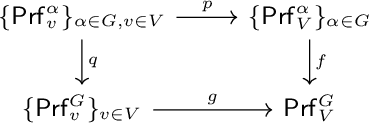
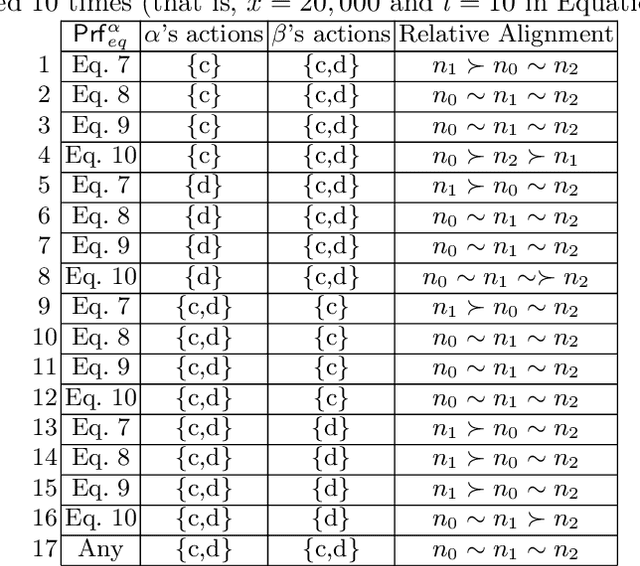
Abstract:principles that should govern autonomous AI systems. It essentially states that a system's goals and behaviour should be aligned with human values. But how to ensure value alignment? In this paper we first provide a formal model to represent values through preferences and ways to compute value aggregations; i.e. preferences with respect to a group of agents and/or preferences with respect to sets of values. Value alignment is then defined, and computed, for a given norm with respect to a given value through the increase/decrease that it results in the preferences of future states of the world. We focus on norms as it is norms that govern behaviour, and as such, the alignment of a given system with a given value will be dictated by the norms the system follows.
TAIP: an anytime algorithm for allocating student teams to internship programs
May 19, 2020



Abstract:In scenarios that require teamwork, we usually have at hand a variety of specific tasks, for which we need to form a team in order to carry out each one. Here we target the problem of matching teams with tasks within the context of education, and specifically in the context of forming teams of students and allocating them to internship programs. First we provide a formalization of the Team Allocation for Internship Programs Problem, and show the computational hardness of solving it optimally. Thereafter, we propose TAIP, a heuristic algorithm that generates an initial team allocation which later on attempts to improve in an iterative process. Moreover, we conduct a systematic evaluation to show that TAIP reaches optimality, and outperforms CPLEX in terms of time.
Synergistic Team Composition: A Computational Approach to Foster Diversity in Teams
Sep 26, 2019
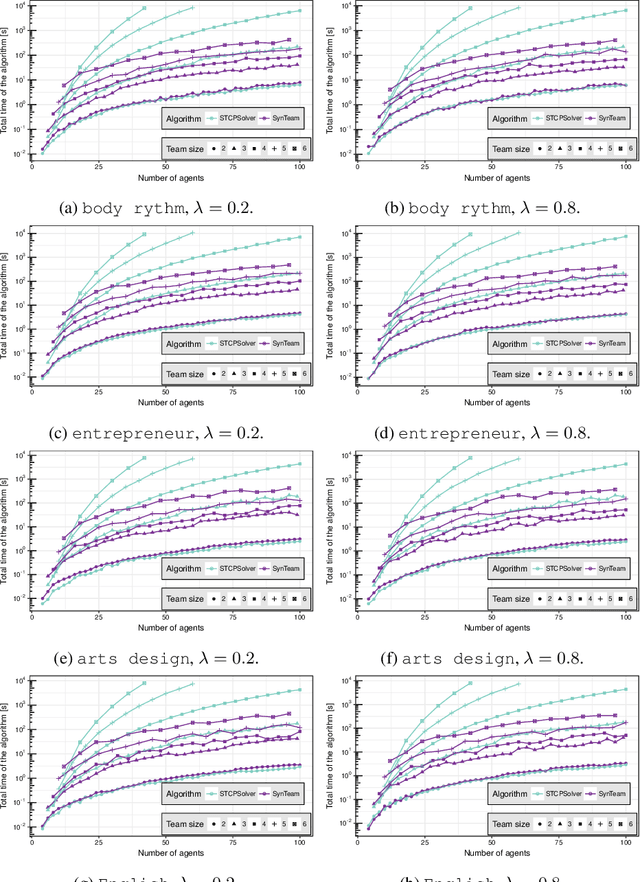

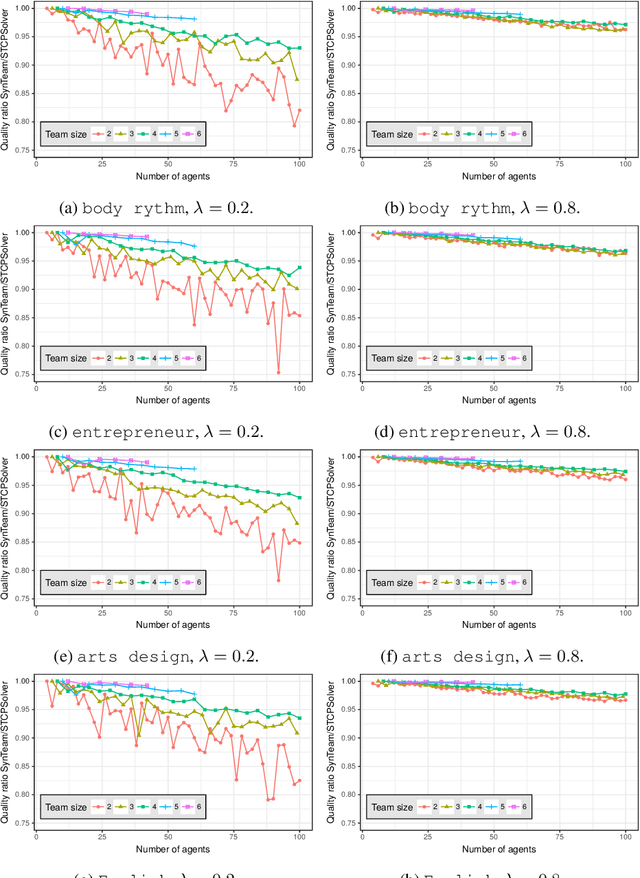
Abstract:Co-operative learning in heterogeneous teams refers to learning methods in which teams are organised both to accomplish academic tasks and for individuals to gain knowledge. Competencies, personality and the gender of team members are key factors that influence team performance. Here, we introduce a team composition problem, the so-called synergistic team composition problem (STCP), which incorporates such key factors when arranging teams. Thus, the goal of the STCP is to partition a set of individuals into a set of synergistic teams: teams that are diverse in personality and gender and whose members cover all required competencies to complete a task. Furthermore, the STCP requires that all teams are balanced in that they are expected to exhibit similar performances when completing the task. We propose two efficient algorithms to solve the STCP. Our first algorithm is based on a linear programming formulation and is appropriate to solve small instances of the problem. Our second algorithm is an anytime heuristic that is effective for large instances of the STCP. Finally, we thoroughly study the computational properties of both algorithms in an educational context when grouping students in a classroom into teams using actual-world data.
* Accepted version
Synergistic Team Composition
Feb 27, 2017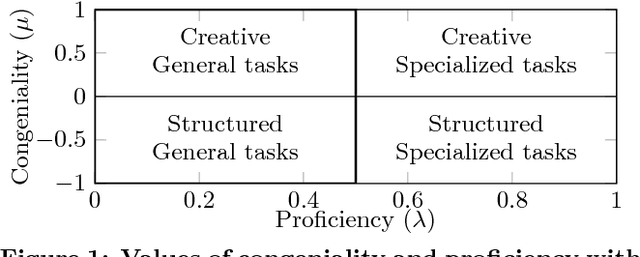
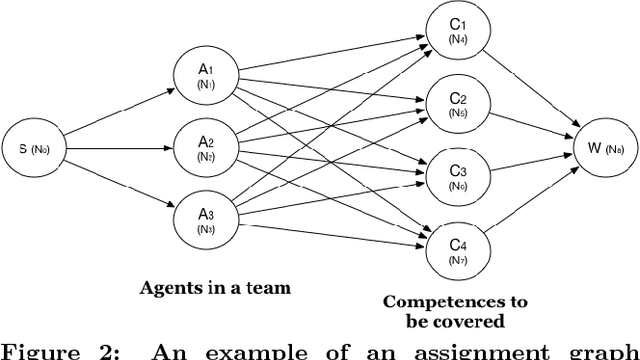
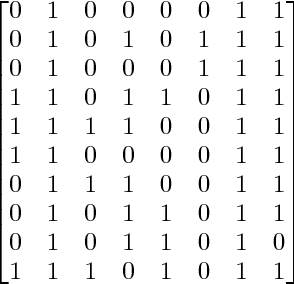
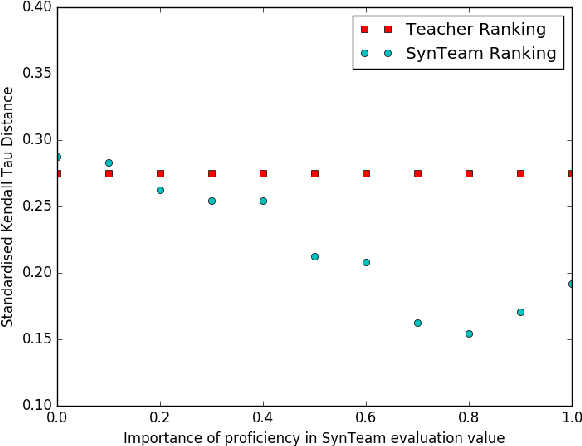
Abstract:Effective teams are crucial for organisations, especially in environments that require teams to be constantly created and dismantled, such as software development, scientific experiments, crowd-sourcing, or the classroom. Key factors influencing team performance are competences and personality of team members. Hence, we present a computational model to compose proficient and congenial teams based on individuals' personalities and their competences to perform tasks of different nature. With this purpose, we extend Wilde's post-Jungian method for team composition, which solely employs individuals' personalities. The aim of this study is to create a model to partition agents into teams that are balanced in competences, personality and gender. Finally, we present some preliminary empirical results that we obtained when analysing student performance. Results show the benefits of a more informed team composition that exploits individuals' competences besides information about their personalities.
Dispute Resolution Using Argumentation-Based Mediation
Sep 15, 2014Abstract:Mediation is a process, in which both parties agree to resolve their dispute by negotiating over alternative solutions presented by a mediator. In order to construct such solutions, mediation brings more information and knowledge, and, if possible, resources to the negotiation table. The contribution of this paper is the automated mediation machinery which does that. It presents an argumentation-based mediation approach that extends the logic-based approach to argumentation-based negotiation involving BDI agents. The paper describes the mediation algorithm. For comparison it illustrates the method with a case study used in an earlier work. It demonstrates how the computational mediator can deal with realistic situations in which the negotiating agents would otherwise fail due to lack of knowledge and/or resources.
 Add to Chrome
Add to Chrome Add to Firefox
Add to Firefox Add to Edge
Add to Edge